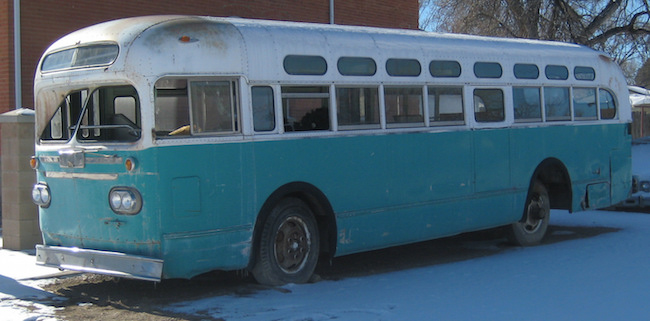
If you want to start a bus line in Ontario you'll need to prove to the Ontario Highway Transport Board that your service will serve "public necessity and convenience" which includes, among other things, explaining your "impact on existing carriers if the service were granted". You also need to tell the board who are your "10 Largest Shareholders" and the "No. of Shares held" by each of them, your "business plan" and a "projected operating statement for the first year". After you file this information anyone in Ontario can request a copy ("All information pertaining to the applicant i.e. business plan, supporting evidence, etc. is on file at the Board and is available upon request." [e.g. on pg. 472]).
I wouldn't want all of my business plans, shareholder information and projected financial numbers released to the incumbents that I'm attempting to compete with.
The "public necessity and convenience" test can be more clearly seen for what it is by looking at how the parallel system at the Federal level is regulated. In 1988 Parliament passed a new law for trucking that specifically removed the public necessity and convenience test in order to liberalize the market for bus transport (see q. 4 of Arbour's dissent in Ontario Highway Transport Board v. Ontario Trucking Assn.). A 2011 report on intercity bus service by the all-province Council of Deputy Ministers Responsible for Transportation and Highway Safety recommended removing the public necessity test in order to encourage competition.
Imagine if a new restaurant had to prove, before it opened, that they wouldn't have a negative impact on existing restaurants. If my startup clients had to follow rules like these I wouldn't have very many clients.
The Board only has two members and both have served since 1999. If you want to open a bus line in Ontario you'll have to explain to Gary and/or Gilles the following:
- the transportation needs of the public as seen through the public witnesses
- the adequacy and quality of the existing services
- the level of competition in the area in question
- the choice of modes of transportation
- the convenience of the public
- the uniqueness or distinctiveness of the proposed service or equipment
- the viability of the proposed service and market sustainability
- the fitness of the applicant ... financial, operational and safety
- the impact on existing carriers if the service were granted
What does this cost Ontarians? Leaving tomorrow on Greyhound from Toronto to Ottawa costs around $60 CAD and takes about 5-6 hours. Leaving from New York to Washington, D.C., a 5-6 hour trip, on Greyhound USA costs about $40 CAD. A trip on a discount competitor bus line is $32 CAD. The impact of this is largely borne by low-income Ontarians. A 2002 Parliamentary Committee report concluded that "[i]t is well accepted that scheduled bus riders have been among the least affluent of passengers by public mode." Those are the kind of people who need competition the most because every dollar counts.
You can read the entire Ontario Highway Transport board bus license application here: http://www.ohtb.gov.on.ca/eng/forms/public.pdf. More information about the Board's activities can be found in its 2014-2015 business plan: http://www.ohtb.gov.on.ca/eng/open/OntarioHighwayTransportBoard2014-2015BusinessPlan.pdf.
